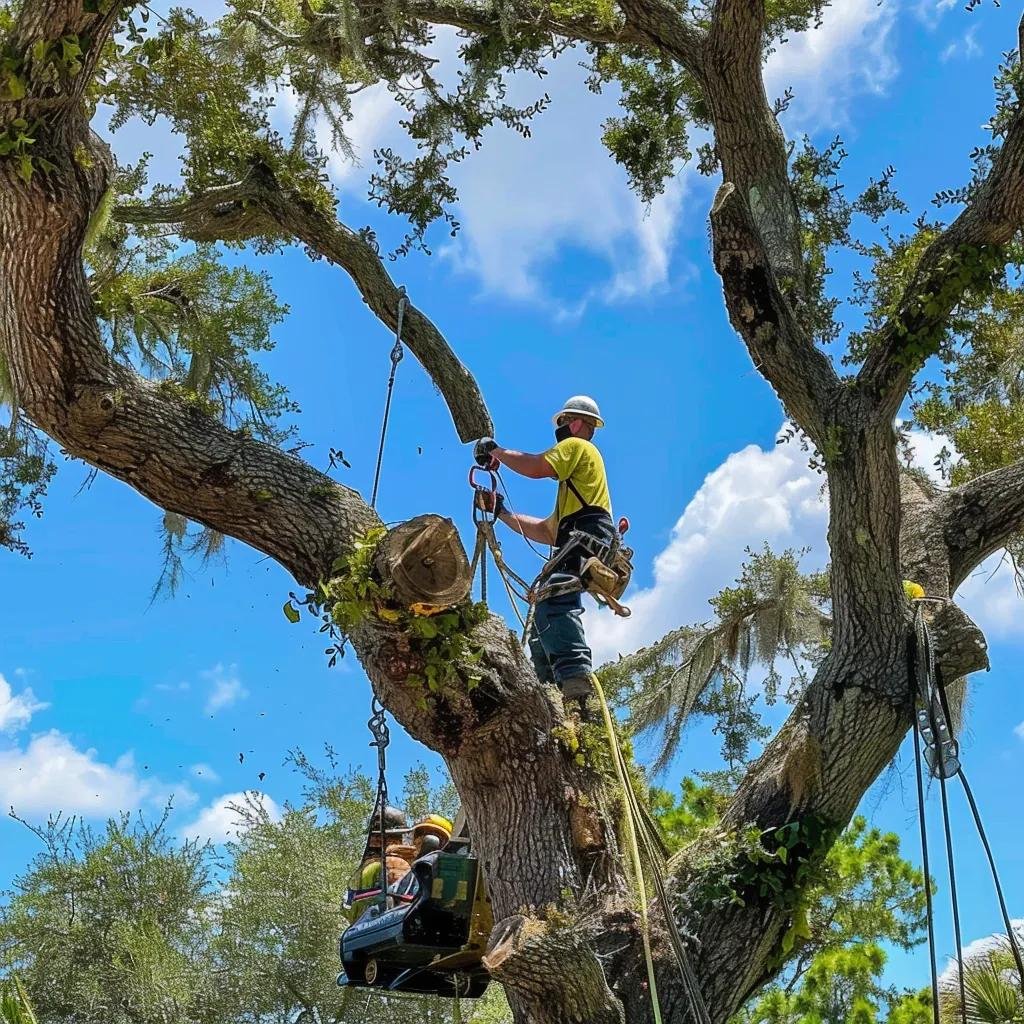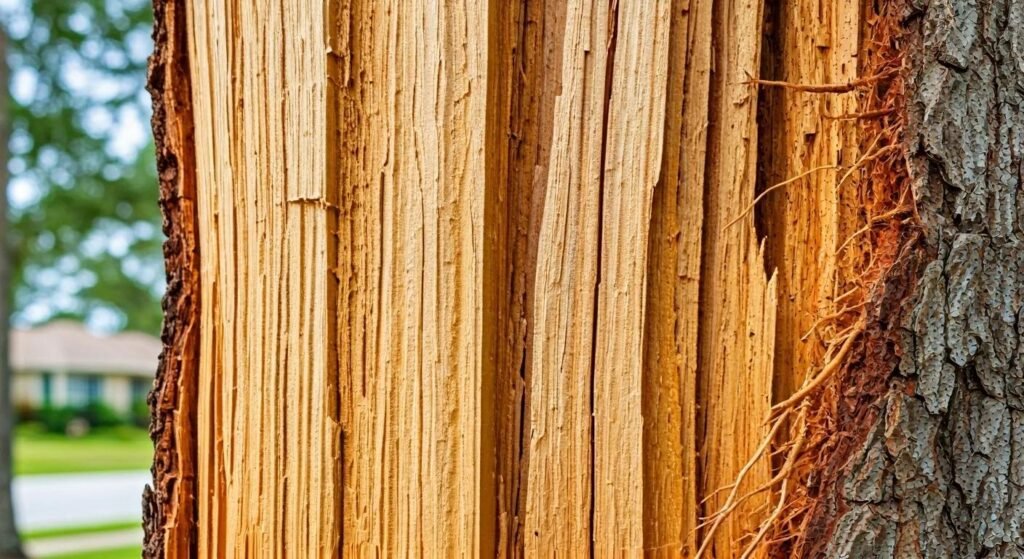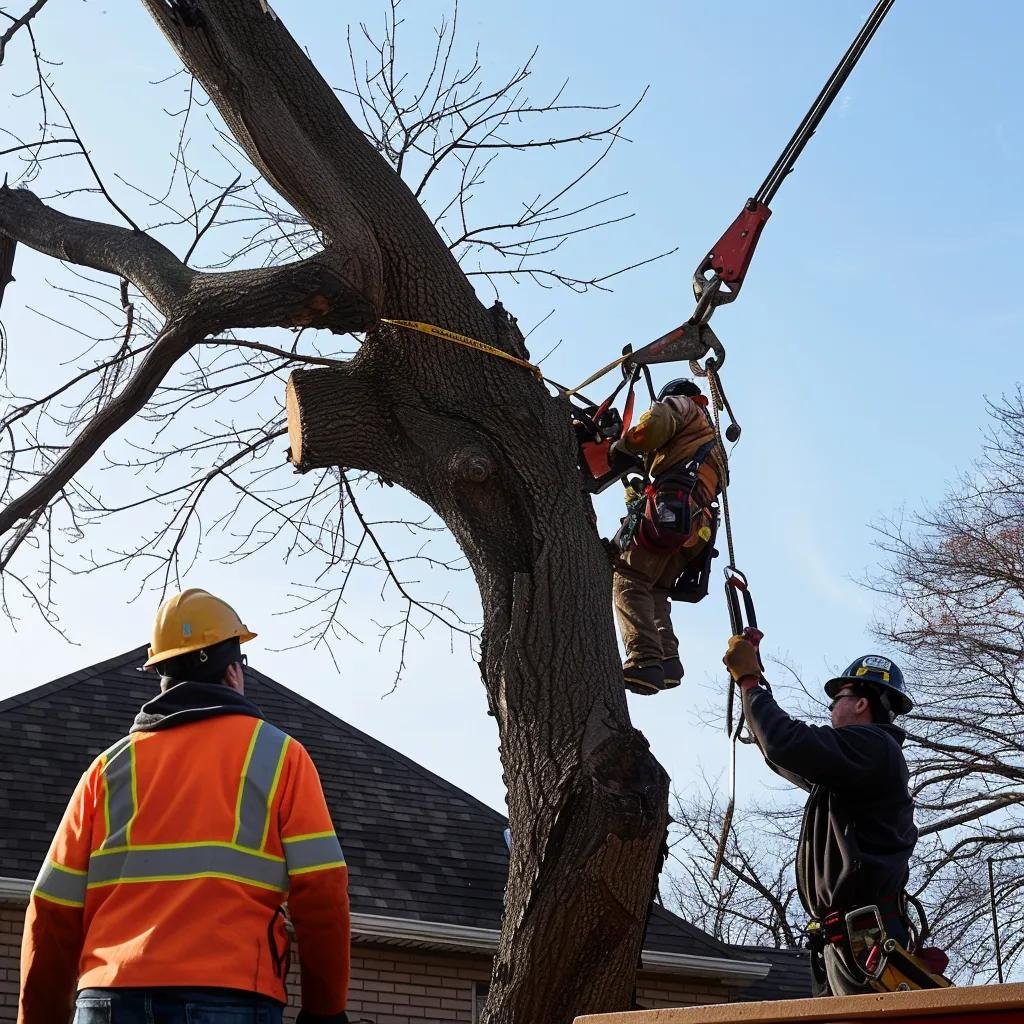Emergency Tree Removal in Deltona FL: 24/7 Rapid Response & Care

When a mature oak snaps free of its roots during a Deltona storm, urgent removal is essential to protect lives and property. You’ll learn how to identify hazardous trees, access our 24/7 rapid response process, understand cost estimates, verify insured service credentials, implement preventative care, manage storm cleanup, and secure affordable, reliable tree solutions. This guide to emergency tree service in Deltona FL integrates practical steps with professional insights to ensure safety, efficiency, and peace of mind.
What Defines an Emergency Tree Service in Deltona FL?
An emergency tree service in Deltona FL addresses immediate hazards arising from fallen trunks, unstable limbs, storm impacts, disease-weakened wood, or pest-inflicted decay that threaten property and safety. Rapid response by certified arborists, specialized equipment, and proven safety protocols distinguish urgent tree removal from routine care.
Emergency Tree Service and Safety
Emergency tree services are crucial for addressing immediate hazards caused by fallen trees, unstable limbs, and storm damage. Certified arborists use specialized equipment and follow safety protocols to ensure efficient and safe removal, protecting both property and individuals from potential harm [1].
This research supports the importance of professional expertise and safety measures in emergency tree care, as highlighted in the article.
What Are the Common Signs of a Hazardous Tree in Deltona?

Trees showing signs of structural failure require prompt attention to prevent collapse and injury.
- Large vertical cracks splitting the trunk indicate internal decay and instability.
- Exposed or lifted root plates reveal compromised anchorage after high winds.
- Dead branches or sparse foliage often signal disease or pest infestation.
- Leaning trunks encroaching on structures or power lines pose high collapse risk.
- Mushroom or fungal growth at the base suggests root rot and internal decay.
These indicators guide homeowners toward timely assessment and removal, laying the foundation for emergency response processes.
Which Storm Damage Conditions Require Immediate Tree Removal?
Certain storm-induced conditions in Deltona escalate to full emergencies when they threaten safety or access.
| Condition | Hazard Attribute | Emergency Action Required |
|---|---|---|
| Uprooted Tree | Exposed roots, lean | Remove before collapse |
| Split Trunk | Structural weakness | Section and remove compromised wood |
| Hanging Limbs | Unstable branches | Secure or remove to prevent fall |
| Storm-tossed Debris | Obstructed driveways | Clear access for safety crews |
| Fallen Trees on Lines | Electrical hazard | Coordinate with utility before removal |
Each scenario demands specialized techniques and immediate coordination, underscoring the need for 24/7 availability and expert crews.
How Do Tree Diseases and Pest Infestations Cause Emergencies?
Biological stressors undermine wood integrity, creating hidden hazards that can lead to sudden limb failure or trunk collapse.
| Disease/Pest | Symptom | Emergency Risk |
|---|---|---|
| Laurel Wilt | Rapid wilting, dark streaks | Sudden branch drop near structures |
| Asian Cycad Scale | Yellowing fronds, sticky residue | Weakens trunk tissue over time |
| Anthracnose | Leaf and twig die-off | Increases deadwood prone to falling |
| Oak Wilt | Discolored foliage, root decay | Trunk brittleness and explosive splits |
| Aphid Infestation | Sticky honeydew, sooty mold | Attracts secondary pathogens |
Understanding these threats helps Deltona residents recognize when decay or infestation escalates to an emergency requiring professional intervention.
How Does Our 24/7 Emergency Tree Removal Process Work in Deltona?
Our 24/7 emergency tree removal combines rapid dispatch, expert assessment, safe removal techniques, and thorough cleanup to restore safety and curb damage immediately. This seamless process ensures minimal downtime and maximum protection.
What Happens During the Immediate Response and Hazardous Tree Assessment?
A swift, certified-arborist evaluation sets the stage for safe removal by grading the hazard level, mapping escape routes, and confirming equipment needs.
- Dispatch crew within 30 minutes of the call to secure the site perimeter.
- Conduct visual inspection of tree stability, root condition, and lean angle.
- Assign hazard rating and plan cut sequences to protect structures and responders.
This structured assessment ensures removal proceeds with calculated precision and safety protocols in place.
Which Safe and Efficient Techniques Are Used for Emergency Tree Removal?

Specialized equipment and time-tested methods guarantee both speed and safety during crisis removal.
| Equipment | Purpose | Mechanism |
|---|---|---|
| Crane | Lift heavy trunk sections | Hoists trimmed segments safely |
| Chainsaw | Precision cutting | Sectional removal of branches |
| Skid Steer Loader | Debris transport | Hauls logs and brush to chipper |
| Safety Ropes & Rigging | Controlled descent | Prevents uncontrolled falls |
| Wood Chipper | On-site chipping | Converts debris into mulch |
By combining mechanical advantage with rigging best practices, crews complete emergency removals efficiently and without collateral damage.
How Is Post-Removal Cleanup and Debris Hauling Managed?
Cleanup and debris hauling restore the property to pre-emergency condition, reducing hazards and visual clutter.
- Branches and logs are chipped or cut to transportable lengths.
- Stump grinding services in Deltona remove root collars and surface hazards.
- Site is swept and raked to eliminate small debris and sawdust.
- All wood chips and green waste are hauled to certified disposal or mulch production.
Comprehensive cleanup ensures the grounds are safe, tidy, and ready for any follow-up stump grinding or pruning.
What Are the Costs and Estimates for Emergency Tree Services in Deltona FL?
Emergency tree removal costs in Deltona FL reflect urgency, tree size, location complexity, and cleanup scope. Free estimates help homeowners budget before committing to service.
How Much Does Emergency Tree Removal Cost in Deltona?
Emergency tree removal prices typically range from $800 to $3,500 depending on trunk diameter, accessibility, and storm severity. Urgency fees may apply for nights or weekends.
Key cost drivers include:
- Tree height and trunk width
- Proximity to structures or power lines
- Crew size and equipment required
- Volume of debris and stump grinding needs
Understanding these factors empowers property owners to anticipate investment and avoid surprise fees.
Are Free Tree Service Estimates Available in Deltona?
Yes, free on-site consultations and tree assessments are standard in Deltona FL. Our certified arborists provide detailed quotes covering emergency removal, stump grinding, and related services without obligation.
Requesting an estimate involves:
- Scheduling a convenient site visit online or by phone.
- Conducting a visual inspection and hazard assessment.
- Delivering a written estimate outlining scope, cost, and scheduling options.
Transparent, no-cost estimates help residents compare affordable tree removal options before making decisions.
What Factors Influence Tree Limb Removal and Stump Grinding Prices?
| Entity | Attribute | Value / Impact |
|---|---|---|
| Limb Removal | Branch diameter | Larger branches require more time |
| Accessibility | Site terrain | Steeper grades slow equipment |
| Stump Grinding | Stump diameter | Wider stumps need more passes |
| Volume of Debris | Cubic yards | Affects hauling and disposal fees |
| Urgency | Response time | After-hours rates may apply |
Why Choose the Best Insured Tree Service Company in Deltona FL?
Selecting a fully insured and licensed tree service company in Deltona FL ensures financial protection, professional accountability, and quality workmanship during emergencies. Trustworthy credentials and local experience form the backbone of reliable emergency care.
How Does Insurance Protect You During Emergency Tree Services?
Comprehensive liability and workers’ compensation insurance safeguard homeowners from unexpected costs if property damage or crew injuries occur during removal. Insurance coverage:
- General liability for structural or landscape damage
- Workers’ compensation for on-site personnel injuries
- Equipment coverage for machinery loss or damage
This protection enhances trust and guarantees peace of mind when facing high-risk tree emergencies.
What Qualifications and Experience Should a Deltona Arborist Have?
Professional credentials and local expertise ensure safe, effective emergency interventions. Arborist qualifications include:
- ISA certification demonstrating arboricultural knowledge
- State licensing through Florida’s Department of Business and Professional Regulation
- On-the-job experience with Deltona’s native tree species and storm patterns
- Ongoing safety training in rigging, aerial rescue, and emergency response
These credentials confirm readiness to handle every aspect of emergency tree removal.
How Do Customer Testimonials Reflect Service Quality?
Positive reviews and testimonials showcase real-world performance during urgent tree emergencies. Clients often praise:
- Rapid 24/7 response times that prevented further damage
- Clear communication and transparent pricing
- Professionalism and respect for property restoration
- Thorough cleanup that left yards safe and debris-free
Social proof reinforces service reliability and commitment to customer satisfaction.
How Can Preventative Tree Care Reduce Emergencies in Deltona?
Preventative Tree Care and Storm Preparedness
Proactive tree care, including trimming and pruning, significantly reduces the likelihood of emergencies by maintaining structural health and resilience against storms, pests, and diseases. Regular maintenance helps to minimize risks and costs over time, ensuring the longevity and safety of trees [2].
This citation reinforces the article’s emphasis on preventative measures to reduce the need for emergency tree services.
What Are the Benefits of Tree Trimming and Pruning for Storm Preparedness?
Strategic trimming enhances wind flow, reduces limb weight, and strengthens branch unions before storm season. Benefits include:
- Reduced wind resistance that prevents uprooting.
- Removal of deadwood to avert falling hazards.
- Improved canopy structure for balanced weight distribution.
These measures support healthier, more resilient trees and decrease emergency removal incidents.
How Does Tree Fertilization and Disease Treatment Improve Tree Health?
| Treatment | Attribute | Benefit |
|---|---|---|
| Soil Fertilization | Nutrient balance | Enhances root development |
| Fungicide Application | Disease suppression | Prevents decay and limb brittleness |
| Insecticide Treatment | Pest eradication | Stops infestations that weaken wood |
By bolstering overall tree health, these preventative services reduce the frequency and severity of emergency situations.
When Is Tree Limb Removal Necessary to Prevent Hazards?
Removing limbs before they become unstable safeguards against property damage and injuries. Risk triggers include:
- Overextended branches leaning toward buildings
- Dead or cracked limbs visible after seasonal changes
- Branches crowding power lines or obstructing access
- Limbs rubbing against structures causing wear
Timely limb removal complements regular pruning to maintain a safe landscape.
What Should Deltona Residents Know About Storm Damage Tree Cleanup?
How Is Storm Damage Assessed and Prioritized for Cleanup?
Crews triage affected trees by evaluating safety risk, obstruction severity, and potential property impact. Assessment criteria:
- Proximity to homes, roads, and power lines
- Size and weight of fallen material
- Number of trees affected
- Accessibility for equipment and emergency vehicles
This structured approach ensures resources focus on the most critical hazards first, restoring safety quickly.
What Are the Best Practices for Safe Fallen Tree Removal After Storms?
Using proper safety gear and stepwise techniques prevents accidents during cleanup. Key practices include:
- Wearing full personal protective equipment (PPE) including helmets and chaps.
- Establishing secure anchor points before cutting heavy sections.
- Employing directional cuts to control log drop zones.
- Clearing debris in manageable segments to maintain access routes.
Adherence to these methods protects crews and homeowners throughout the cleanup process.
How Does Timely Cleanup Minimize Property Damage and Risks?
Prompt removal of storm-damaged trees prevents secondary hazards such as rot, mold growth, and pest attraction while eliminating trip and fire risks. Rapid cleanup also maintains clear emergency egress and preserves landscape health for future storm resilience.
How Do You Access Affordable and Reliable Tree Services in Deltona FL?
What Are the Options for Affordable Tree Removal and Stump Grinding?
Cost-saving strategies help homeowners access essential services at competitive rates:
- Bundling tree removal with stump grinding to reduce per-service fees.
- Scheduling work during off-peak seasons for discounted rates.
- Seeking group discounts for multiple properties in the same neighborhood.
These options make professional tree care, including stump grinding services in Deltona, more accessible.
How Can You Verify a Tree Service Is Licensed and Insured in Volusia County?
Confirming credentials protects you from liability and ensures compliance with local regulations. Verification steps:
- Check Florida DBPR online for active contractor licenses.
- Request certificates of insurance for liability and workers’ compensation.
- Review permits on file with Volusia County Building and Code Compliance.
These steps validate service reliability and regulatory adherence.
Where Can You Find Free Consultations and On-Site Tree Assessments?
Free tree estimates in Deltona FL are available through:
- Online quote request forms on reputable local service websites.
- Community events hosted by arborist associations and homeowner groups.
- Seasonal promotions advertised via social media and local flyers.
On-site assessments provide transparent pricing and scope clarity before any work begins.
Emergency tree threats demand swift identification, professional intervention, and thorough restoration. With 24/7 rapid response, insured arborists, transparent pricing, and preventative care options, Deltona residents can protect their property and peace of mind. Contact our certified team for reliable emergency tree service and proactive landscape management in Deltona FL today.
Frequently Asked Questions
What should I do if I suspect a tree is hazardous?
If you suspect a tree may be hazardous, it’s crucial to act quickly. Look for signs such as large cracks, leaning trunks, or dead branches. Avoid approaching the tree and keep a safe distance. Contact a certified arborist or emergency tree service immediately for a professional assessment. They can evaluate the tree’s condition and determine if removal or other interventions are necessary to ensure safety for your property and those nearby.
How can I prepare my trees for storm season?
Preparing your trees for storm season involves several proactive measures. Regular pruning helps remove dead or weak branches that could become hazards during high winds. Additionally, consider fertilizing your trees to promote strong root systems. Inspect trees for signs of disease or pest infestations and address these issues promptly. Consulting with a certified arborist can provide tailored advice for your specific tree species and local conditions, enhancing their resilience against storms.
What are the environmental impacts of tree removal?
Tree removal can have significant environmental impacts, including loss of habitat for wildlife, increased soil erosion, and changes in local microclimates. It’s essential to consider these factors before proceeding with removal. If a tree poses a danger, explore options like relocation or selective pruning. Engaging with a professional arborist can help you understand the ecological implications and find solutions that balance safety with environmental stewardship.
How often should I have my trees assessed for health?
It’s advisable to have your trees assessed for health at least once a year, especially if they are mature or located near structures. Regular assessments can help identify early signs of disease, pest infestations, or structural weaknesses. Additionally, after severe weather events, a prompt evaluation is crucial to ensure the trees remain safe and healthy. Consulting with a certified arborist can provide expert insights and recommendations tailored to your specific tree species and local conditions.
What should I look for in a tree service company?
When selecting a tree service company, prioritize those that are fully insured and licensed. Look for certifications from recognized organizations, such as the International Society of Arboriculture (ISA). Check customer reviews and testimonials to gauge their reputation and service quality. Additionally, inquire about their experience with emergency tree services and their safety protocols. A reliable company should provide transparent pricing and free estimates, ensuring you understand the scope of work before committing.
Can I perform tree removal myself?
While some homeowners may consider DIY tree removal, it is generally not recommended, especially for large or hazardous trees. Tree removal requires specialized knowledge, equipment, and safety protocols to prevent injury and property damage. Certified arborists are trained to assess risks and execute removals safely. If you encounter a tree that poses a danger, it’s best to contact a professional service to handle the situation effectively and safely.
What are the signs that a tree needs to be pruned?
Signs that a tree may need pruning include dead or broken branches, excessive growth that obstructs structures or power lines, and signs of disease such as discolored leaves or fungal growth. Additionally, if the tree’s canopy is dense, it may benefit from thinning to improve air circulation and light penetration. Regular pruning not only enhances the tree’s appearance but also promotes its health and longevity. Consulting with a certified arborist can help determine the best pruning practices for your trees.
